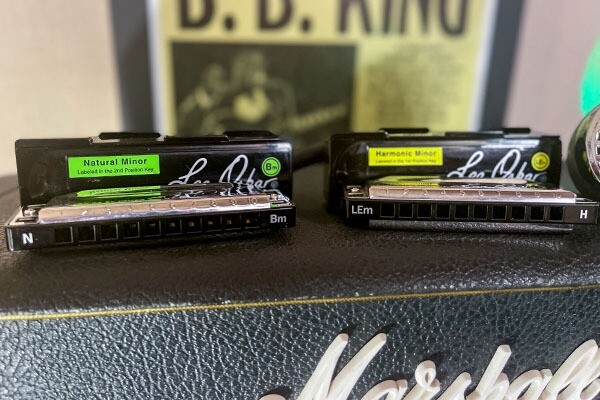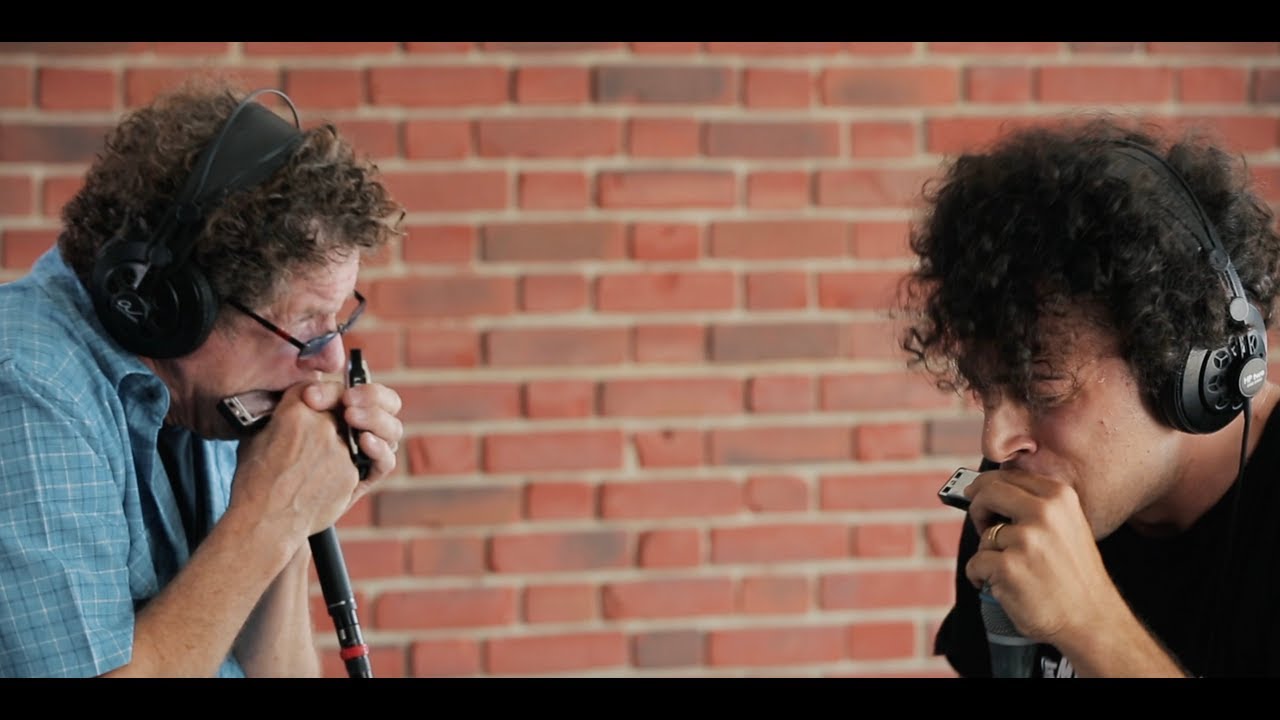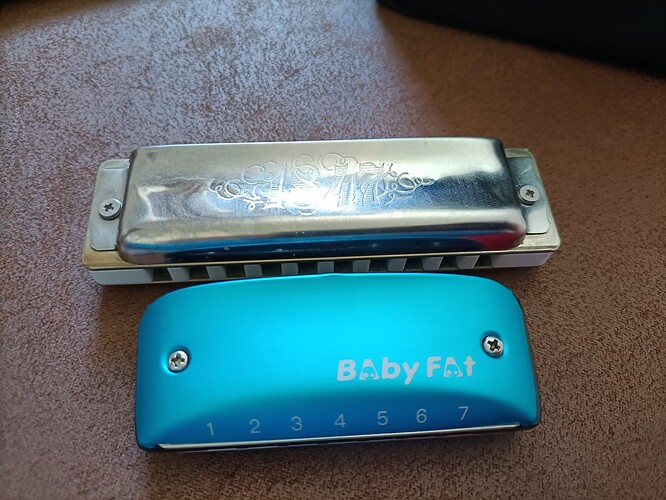Last month I wrote about why Natural Minor harmonicas are awesome.
(If you missed it you can read about it here as well as check out this videoof me playing Natural Mystic on an Am Natural Minor Harmonica.)
But here’s the gist:
![]() Natural Minor harmonicas are:
Natural Minor harmonicas are:
Labeled in 2nd position
(A Gm Natural Minor is in the same range as a C standard tuned harmonica)
Everything that you can play in 2nd position on a standard harp, works perfectly on a Natural Minor harp, but now it just SOUNDS MINOR.
It’s the PERFECT choice to play on a MINOR BLUES (a blues where both the i chord and the iv chord are both minor).
That’s why I think Natural Minor harmonicas are the best choice for a beginner or intermediate player’s first foray into the big wide world of alternate tunings.
![]() What about Harmonic Minor? How is it different? First of all, Harmonic Minor is:
What about Harmonic Minor? How is it different? First of all, Harmonic Minor is:
Labeled in 1st position
(A Cm Harmonic Minor is in the same range as a C standard tuned harmonica)
The video “Moonshines”, a collaboration between Moses Concas and Lee Oskar filmed in Germany in 2020, is helpful in hearing the difference.
Moses is playing on a C Harmonic Minor harmonica. It’s got the i minor chord on the blow, and the V7 dominant chord on the draw which creates more tension. Dramatic, classical, intense, and Eastern are all good adjectives to describe it. ![]()
Lee Oskar starts on the C HARMONIC Minor, and you can hear a good melodic example of what I call an “Eastern” here.
By contrast, he switches to the C NATURAL Minor at 1:13. Notice how now we’re hearing more bluesy type melodies that we’re used to vs. the early classical sounds?
That’s the difference in a nutshell. OH, and by the way, I spoke with Lee on the phone recently, and he tells me Moses Concas is slated to fly to Seattle this summer so the two of them can record an entire album together! ![]()
![]()
If you’re uninterested in music theory, you can skip to the next section. On the other hand, if you fancy a theory lesson on the subject…
Natural Minor is called such because it’s what you get “naturally” when you play from A to A on the white keys of the piano.
COMPARED to a MAJOR scale, NATURAL Minor’s 3rd, 6th, and 7th scale degrees are each lowered by a half-step. This is what creates its more somber, pensive, or sad tonality compared to major.
To get the HARMONIC Minor scale, on the other hand, we simply take the NATURAL Minor scale, and RAISE the 7th degree back up a half-step. This changes the tonality in 2 important ways:
1) MELODICALLY, it creates “an augmented 2nd” (which is another name for a minor 3rd) between the 6th and 7th scale degrees, and this is what creates its EASTERN sound.
2) HARMONICALLY, this may sound confusing at first but follow me here: the 7th degree of the scale is the 3rd of the V chord. So NATURAL Minor has a minor v chord. Whereas, HARMONIC Minor has a major V chord WHICH CREATES MORE TENSION wanting to resolve back to the root (dramatic, classical, intense). To hear this in action, here’s a great video on the subject.



